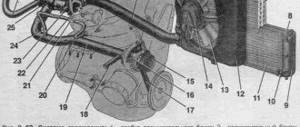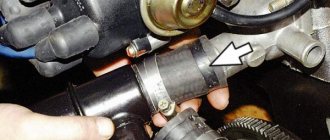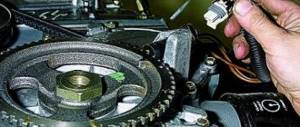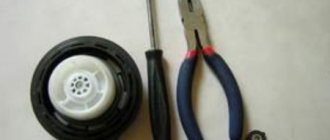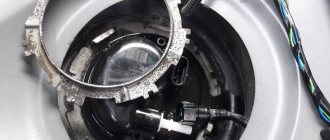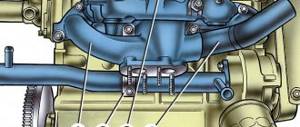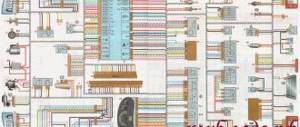What to choose?
Today, when replacing coolant on domestically produced cars, people most often talk about antifreeze. But in addition to antifreeze, antifreeze is actively used for more modern cars.
For the VAZ 2109 cooling system, it is quite possible to use antifreeze rather than antifreeze.
Coolant type
Peculiarities
Variety of assortment
Taking into account the characteristics of each of the presented types of coolant, certain conclusions can be drawn:
- If we take into account the quality characteristics, antifreeze is significantly superior to antifreeze.
- Antifreeze is more practical, given its adaptability to our cars. Its composition is developed with an eye to the local climate, car quality and road conditions.
- You can ask for antifreeze from any oncoming driver passing by if your VAZ 2109 breaks down.
- The characteristics of antifreeze are quite sufficient to ensure the normal functionality of the CO.
Practice shows that it makes no sense to overpay for antifreeze to fill the cooling system of a VAZ 2109.
Device
Coolant replacement intervals
Over the years of operation, the coolant loses its physical and chemical properties, including protection against scale and corrosion, expansion properties when cooling and boiling, and provides lubrication of the centrifugal pump.
To avoid these malfunctions, it is necessary to inspect both the fluid and all units, and, if necessary, replace them during seasonal maintenance.
Owners of cars that have experienced fluid boiling need to take special care of the system, since the protective layer of paint on the walls of the cooling jacket is damaged and the engine block is severely corroded. You need to fill it with high-quality antifreeze and rinse it first.
Replacement
The procedure for replacing antifreeze can be divided into four main stages:
- Draining the old coolant;
- Flushing the system;
- Filling with new antifreeze;
- Checking the functionality of the system.
Now we will go through each stage separately.
Expansion tank
Draining old coolant
- To work you will need a pit or overpass. In garage conditions this is not a problem.
- The procedure should only be started with a cold engine. Do not add new coolant if you just turned off the engine a couple of minutes ago. Otherwise, there is a risk of cracks in the cylinder block.
- Remove the negative terminal from the battery.
- Place a prepared container with a volume of about 10 liters under the car.
- Remove the cap from the CO expansion tank.
- Using a socket or a 13mm wrench, unscrew the drain plug from the cylinder block.
- Hold the plug so that the coolant pressure does not blow it away. There is no point in losing such an element.
- When all the liquid has come out, screw the lid on.
- Drain the coolant now from the radiator by unscrewing the plastic plug. The liquid will flow into the prepared container.
- Screw the drain cap on by hand. No tool required here.
Drain procedure
Flushing
If you find traces of contamination in the drained antifreeze, the liquid has acquired a rusty tint, it is better to rinse the system thoroughly. If you ignore this recommendation, the new antifreeze will not last long, so you will soon have to change it again.
- For washing, use special compounds or ordinary water. It is better to use distilled water, but if you really want to save money, take tap water;
- Pour CO flushing liquid into the system through the neck of the expansion tank;
- Start the engine, raise the speed a little and let the engine run for about 10 minutes;
- Turn off the engine and repeat the draining procedure according to the instructions that you read above. Only now the system will not contain antifreeze, but a flushing composition;
- Repeat flushing as necessary until the water coming out of the drain holes is clear.
Flushing the system
Flushing is just a recommendation, not a mandatory procedure. But those who regularly flush the system claim that it works more reliably and longer this way. So decide for yourself what to do.
Fill
To fill in new antifreeze, you don’t have to do anything complicated. You just need a special watering can. Many containers in which antifreeze is sold are not particularly convenient for pouring directly from them. Use a funnel to avoid spilling coolant.
It is extremely important to know exactly how much antifreeze is in the cooling system. The coolant for the VAZ 2109 requires 7.8 liters. Therefore, antifreeze should be purchased in 8-liter containers.
- Take a watering can and insert it into the neck of the expansion tank. This way you won’t spill precious grams of antifreeze.
- Check that all drain plugs are securely tightened. Otherwise, the coolant will simply spill out onto the floor and you will have to buy new coolant.
- Start gradually pouring in new antifreeze.
- Stop periodically for 1-2 minutes so that the liquid has time to distribute throughout the system.
- After filling the system, add coolant to the middle of the expansion tank level.
- Next, the most important thing is to get rid of the air that has entered the cooling system.
- Air accumulates in the upper pipe. To remove it, you just need to squeeze the upper pipe several times. Squeeze until you feel liquid appear inside.
- Bleed the cooling system. To do this, use a screwdriver or a size 8 wrench to unscrew the clamp that holds the return hose to the CO expansion tank (return).
- Now close the fitting with your finger, onto which the return line is put, so that air cannot escape from there.
- Next you need to blow into the expansion tank. Just imagine that you are trying to inflate the tank like a balloon.
- This will create pressure and coolant will begin to flow from the expansion tank into the CO, and excess air will escape through the return.
- As soon as antifreeze begins to flow out of the return line, the procedure can be stopped.
- Replace the return line and tighten the clamp.
- Reconnect the negative terminal of the battery, close the cap of the expansion tank and check the quality of the work done.
It is not recommended to begin active operation of the vehicle without checking.
Examination
Checking for coolant replacement is easy, but this does not make the importance of this procedure underestimated.
- Start the engine, let it run for a few minutes at medium speed;
- As the new coolant heats up, coolant will begin to flow from the return into the expansion tank;
- If the liquid spills out, you did everything right;
- Make sure the thermostat, temperature sensors, and cooling fan are working;
- When the engine temperature rises, the thermostat opens if it is working properly. Feel the bottom of the thermostat. If it is warm, everything functions perfectly;
- Wait for the fan to automatically turn on, cool the system, and shut down. Again, this behavior indicates the performance of the sensor and fan.
Briefly about replacement
The process of replacing antifreeze on VAZ 2109 engines is carried out either once every three years, or once every 60 thousand km, or (advisable) when carrying out repair work on cooling system units. The operation route looks like this:
- remove the ignition module (on injection models);
- drain the used antifreeze;
- Having disconnected the coolant supply hose to the throttle assembly (injector) or to the carburetor, fill in a new mixture through the expansion tank;
- start the engine for 1-2 minutes;
- check and, if necessary, add antifreeze;
- start and warm up the engine to the fan operating temperature (105-107 degrees);
- turn off the engine, inspect the system for leaks, and if necessary, add antifreeze to the medium level.
The coolant (coolant) on VAZ vehicles must be replaced at least once every 2 years or every 45,000 km. If this is not done, the coolant may over time become diluted with water that comes from the condensate and at one “wonderful moment” it will simply freeze in the cold, causing you a lot of trouble. In addition, water in the system promotes corrosion.
Replacing coolant in the engine cooling system of VAZ 2108, 2109, 21099 cars
It would seem that a simple procedure for replacing the coolant (coolant) in the cooling system of a carburetor or injection engine of VAZ 2108, 2109, 21099 cars and their modifications has some features without knowledge of which, as a result, you can get a number of problems (for example, constant overheating of the engine and knocking out the cover expansion tank).
Therefore, we will analyze the replacement procedure taking them into account.
Necessary tools, accessories and spare parts
— Socket wrench or socket “13”
— A canister or two coolants (antifreeze, antifreeze) – 8 liters
Details about choosing antifreeze or antifreeze: “Choosing coolant for the engine cooling system of VAZ 2108, 2109, 21099 cars.”
— Wide container for collecting old coolant (basin) with a capacity of at least 8 liters
— Funnel for filling liquid
— Phillips screwdriver for removing the pipe clamp
Preparatory work
— We install the car on a pit or overpass
— Remove the engine crankcase protection
— Remove the mudguards of the engine compartment
— We place a container under the engine to collect old coolant
— Let the engine cool down
The procedure for replacing the coolant in the engine cooling system of VAZ 2108, 2109, 21099 cars
Draining old coolant
— Drain the coolant from the radiator
To do this, unscrew the radiator drain plug by hand. Drain the liquid.
— Drain the coolant from the engine cylinder block
Unscrew the drain plug on the cylinder block. We use a key or head at “13”. Drain the liquid.
— Remove any remaining old coolant from the system
Unscrew and remove the plug from the expansion tank
After which a little more old fluid will flow out of the radiator and cylinder block drain holes.
We squeeze the radiator pipes with our hands to expel the last remaining liquid.
— We screw back the drain plugs of the radiator and block
Adding new coolant
— Remove the supply pipe from the carburetor heating unit or throttle assembly of an injection engine
— Fill in new coolant
Insert a funnel into the hole in the expansion tank and pour liquid through it. There is no need to add all the liquid at once. Fill in a couple of liters and squeeze the cooling system hoses. A couple more liters, then squeeze again. In this way, air is removed from the system. Air will also escape through the removed carburetor heater hose or throttle body. When liquid appears from it, put the hose back and tighten it with a clamp.
Stop adding fluid when the level in the expansion tank reaches between the MIN and MAX marks. This is the norm.
— Start the engine and wait until the pump circulates the coolant through the system
When the level in the expansion tank decreases, add fluid and bring it to normal.
— Reinstall the expansion tank cap
You can first rinse it under running water and blow it with compressed air.
— Warm up the engine to operating temperature
At the same time, we check how much the level in the expansion tank rises (no more than to the MAX mark), check that there are no leaks from under the hoses, and that the thermostat opens on time. After this, we can assume that the work of replacing the coolant in the engine cooling system of VAZ 2108, 2109, 21099 cars is completed.
Notes and additions
— After draining the liquid from the cooling system, there will still be about a liter left in it. This must be taken into account when calculating the amount of new fluid poured into the system.
— In the engine cooling system of VAZ 2108, 2109, 21099 cars, the coolant is replaced once every 75,000 km or once every five years.
— The exact volume of liquid in the system is 7.8 liters.
— The work of replacing the coolant in the engine cooling system of VAZ 2113, 2114, 2115 cars is similar to that described in the article for VAZ 2108, 2109, 21099.
More articles on the engine cooling system of VAZ 2108, 2109, 21099 cars
— Is it possible to mix antifreeze of different brands and colors?
Comparative car repair test
— Replacement of coolant in the cooling system of VAZ 2105, 2107 cars
Level control and required volume
Before changing the working fluid, the car owner should know what the volume of the Nine’s cooling system is and how much refrigerant it will contain in order to buy the required amount of fluid to complete the task. When changing, the plastic reservoir under the hood will hold about 8.7 liters of antifreeze. If the working substance is not completely drained from the system, then approximately 7-7.5 liters will be poured into it. As for the level control, it is carried out according to the expansion tank marks in the engine compartment. Please note that when the car engine is warm, the fluid volume may be higher. Therefore, before checking, the engine must be turned off and allowed to cool.
Ideally, the refrigerant level should be between two marks - MIN and MAX.
Serber24 user Sani4 in his video clearly demonstrated the procedure for changing antifreeze in a VAZ 2109 car.
For what reasons is coolant consumed?
There are several reasons why the volume of refrigerant will decrease in the refrigeration system:
- Low negative temperatures. In severe frost, the liquid decreases in volume. This reason cannot be called a leak, but car owners in winter often confuse this problem with a fluid leak. During the cold season, experts recommend adding refrigerant to the system.
- Formation of cracks and damage in the expansion tank or on its cover. As practice shows, if the defect on the container is insignificant, it will not be easy to detect it visually. The crack may resemble a scratch. Detailed diagnostics will be required. To identify the location of the leak, you will have to use a special dye that is added to the liquid.
- Lack of tightness in the connections of the lines or damage to the pipes. This problem can be clearly identified. In places of malfunctions, wet traces of refrigerant are visible. If the defect is minor, then it will also not be possible to detect it through visual diagnostics. You will have to add dye to the refrigerant.
- Damage to thermostat or gasket. If there are defects in the device seal, liquid will leak out, and over time its amount in the cooling system will decrease.
- Damage to the radiator device of the heating system. During operation, the radiator wears out. If it has already reached the end of its service life, refrigerant may leak through cracks formed on it or through the hose connected to it. Adding liquid is not practical; the cooling radiator must be replaced.
- Presence of defects on the cylinder head gasket. If there is damage, a leak will form. As a result, the antifreeze will begin to mix with the engine oil, which will enter the coolant. Repairing the problem involves replacing the cylinder head gasket.
Topping up
The coolant addition procedure is performed with the engine cold.
In order to add antifreeze, you need to open the hood of the car and unscrew the cap of the expansion tank. The required amount of liquid is added to the reservoir, after which the lid is screwed on. If it is not known what fluid was used previously, it is better to change it. Because mixing different types of refrigerants will cause the substance to lose its properties.
How to replace coolant on a VAZ 2109
In this article we will look in detail at how to drain antifreeze on a VAZ 2109 and completely replace it. We’ll also look at how to fix a leak.
It is necessary to change antifreeze or antifreeze according to the manufacturer's instructions or if the vehicle is operated at low temperatures. Any brand of antifreeze has a certain operating temperature, when reduced, the process of its crystallization can begin. To carry out the work, we need a lift, overpass or inspection hole.
How to change coolant
Important! Before you begin the replacement process on the VAZ 2109, you must disconnect the “-” terminal from the battery.
You can change the coolant only when the engine has completely cooled down!
Draining process
- To drain the cooler, place your car on a horizontal platform. If there are no such conditions, then try to make the front of the car slightly higher.
- Move the heater control lever all the way to the right.
Heater lever position
|
|
- Remove the ignition module with bracket.
- Unscrew and remove the reservoir cap.

